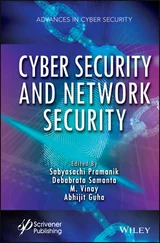1.In Disk Management, press and hold or right-click a basic disk that you want to convert, either in the Disk List view or in the left pane of the Graphical View. Then tap or click Convert To Dynamic Disk.
2.In the Convert To Dynamic Disk dialog box, select the check boxes for the disks you want to convert. Tap or click OK to continue. This displays the Disks To Convert dialog box, which shows the disks you’re converting.
The buttons and columns in this dialog box contain the following information:
■ NameShows the disk number.
■ Disk ContentsShows the type and status of partitions, such as boot, active, or in use.
■ Will ConvertSpecifies whether the drive will be converted. If the drive doesn’t meet the criteria, it won’t be converted, and you might need to take corrective action, as described previously.
■ DetailsShows the volumes on the selected drive.
■ ConvertStarts the conversion.
3.To begin the conversion, tap or click Convert. Disk Management warns you that after the conversion is complete, you won’t be able to start previous versions of Windows from volumes on the selected disks. Tap or click Yes to continue.
4.Disk Management restarts the computer if a selected drive contains the boot partition, system partition, or a partition in use.
Changing a dynamic disk back to a basic disk
Before you can change a dynamic disk back to a basic disk, you must delete all dynamic volumes on the disk. After you do this, press and hold or right-click the disk and select Convert To Basic Disk to change the dynamic disk to a basic disk. You can then create new partitions and logical drives on the disk.
Reactivating dynamic disks
If the status of a dynamic disk is Online (Errors) or Offline, you can often reactivate the disk to correct the problem. You reactivate a disk by following these steps:
1.In Disk Management, press and hold or right-click the dynamic disk you want to reactivate, and then tap or click Reactivate Disk. Confirm the action when prompted.
2.If the drive status doesn’t change, you might need to reboot the computer. If this still doesn’t resolve the problem, check for problems with the drive, its controller, and the cables. Also make sure that the drive has power and is connected properly.
Rescanning all drives on a system updates the drive configuration information on the computer. Rescanning can sometimes resolve a problem with drives that show a status of Unreadable. You rescan disks on a computer by choosing Rescan Disks from the Action menu in Disk Management.
Moving a dynamic disk to a new system
An important advantage of dynamic disks over basic disks is that you can easily move dynamic disks from one computer to another. For example, if after setting up a computer you decide that you don’t really need an additional hard drive, you can move it to another computer where it can be better used.
Windows Server 2012 R2 greatly simplifies the task of moving disks to a new system. Before moving disks, you should follow these steps:
1.Open Disk Management on the system where the dynamic disks are currently installed. Check the status of the disks, and ensure that they’re marked as Healthy. If the status isn’t Healthy, you should repair partitions and volumes before you move the disks.
NOTE Drives with BitLocker Drive Encryption cannot be moved by using this technique. BitLocker Drive Encryption wraps drives in a protected seal so that any offline tampering is detected and results in the disk being unavailable until an administrator unlocks it.
2.Check the hard drive subsystems on the original computer and the computer to which you want to transfer the disk. Both computers should have identical hard drive subsystems. If they don’t, the Plug and Play ID on the system drive from the original computer won’t match what the destination computer is expecting. As a result, the destination computer won’t be able to load the right drivers, and the boot attempt might fail.
3.Check whether any dynamic disks you want to move are part of a spanned, extended, or striped set. If they are, you should make a note of which disks are part of which set and plan on moving all disks in a set together. If you are moving only part of a disk set, you should be aware of the consequences. For spanned, extended, or striped volumes, moving only part of the set will make the related volumes unusable on the current computer and on the computer to which you are planning to move the disks.
When you are ready to move the disks, follow these steps:
1.On the original computer, start Computer Management. Then, in the left pane, select Device Manager. In the Device list, expand Disk Drives. This shows a list of the physical disk drives on the computer. Press and hold or right-click each disk you want to move, and then tap or click Uninstall. If you are unsure which disks to uninstall, press and hold or right-click each disk and tap or click Properties. In the Properties dialog box, tap or click the Volumes tab and then select Populate to show the volumes on the selected disk.
2.Next, on the original computer, select the Disk Management node in Computer Management. If the disk or disks you want to move are still listed, press and hold or right-click each disk, and then tap or click Remove Disk.
3.After you perform these procedures, you can move the dynamic disks. If the disks are hot-swappable disks and this feature is supported on both computers, remove the disks from the original computer, and then install them on the destination computer. Otherwise, turn off both computers, remove the drives from the original computer, and then install them on the destination computer. When you have finished, restart the computers.
4.On the destination computer, access Disk Management, and then choose Rescan Disks from the Action menu. When Disk Management finishes scanning the disks, press and hold or right-click any disk marked Foreign, and then tap or click Import. You should now be able to access the disks and their volumes on the destination computer.
NOTE In most cases, the volumes on the dynamic disks should retain the drive letters they had on the original computer. however, if a drive letter is already used on the destination computer, a volume receives the next available drive letter. If a dynamic volume previously did not have a drive letter, it does not receive a drive letter when moved to the destination computer. Additionally, if automounting is disabled, the volumes aren’t automatically mounted, and you must manually mount volumes and assign drive letters.
Managing virtual hard disks
By using Disk Management, you can create, attach, and detach VHDs. You can create a VHD by choosing Create VHD from the Action menu. In the Create And Attach Virtual Hard Disk dialog box, tap or click Browse. Use the Browse Virtual Disk Files dialog box to select the location where you want to create the.vhd file for the VHD, and then tap or click Save.
In the Virtual Hard Disk Size list, enter the size of the disk in megabytes, gigabytes, or terabytes. Specify whether the size of the VHD dynamically expands to its fixed maximum size as data is saved to it or instead uses a fixed amount of space regardless of the amount of data stored on it. When you tap or click OK, Disk Management creates the VHD.
Читать дальше






